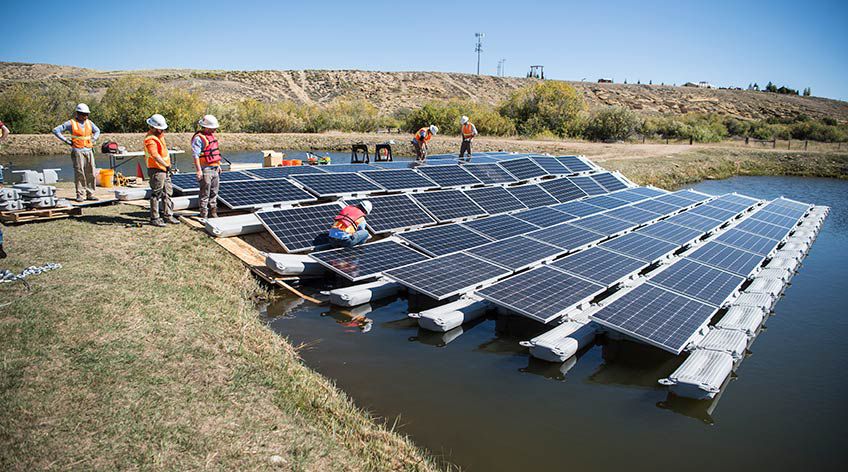A new two-acre solar farm is floating atop the 60-acre Big Muddy Lake at Camp Mackall, a special forces training camp near Fort Bragg.
Installing solar panels is nothing new for the U.S. Army, but floating them on a lake is a first for the Department of Defense, according to Audrey Oxendine, the chief of energy and utilities for Fort Bragg.
“We didn’t have land there to provide for traditional ground-based solar,” she said. Bragg is a massive installation, but the woods around Camp Mackall are home to endangered red cockaded woodpeckers.
She said Fort Bragg would need to clear seven acres of woods for a two-acre solar farm so the trees don’t shade out the panels.
“Even though we’ve got 160,000 acres between Fort Bragg and Camp Mackall, all of it is used for training,” Oxendine said. “Floating solved all these issues for us.”
This is the first floating solar array for the Department of Defense and the largest in the Southeast, she said.
The floating solar field will provide about 1.1 megawatts of power. One megawatt can power about 190 homes, according to the Solar Energy Industries Association.
The Army wanted to install solar at Camp Mackall for two reasons, Oxendine said.
The first is energy security for the camp near Spruce Pines. She said the camp is at the end of a power line, and one pole going down could knock out electricity to the entire camp.
The second reason is for renewable energy and cutting down on electricity costs.
“We are Duke’s largest customer in North Carolina,” she said, with an average annual power bill of about $40 million a year.
The project cost about $36 million. Fort Bragg worked with Duke Energy and Ameresco, a company that helps fund, design and build big projects like this.
“They don’t always have a significant amount of money sitting in a bank account where they can just write a check and do these upgrades on their own,” said Mark Fowler, director of government relations for Ameresco.
Ameresco will find funding for the project and Fort Bragg will pay the company back over time with savings on its energy bill, Fowler said.
“This is not just good for taxpayers, which it is, but it’s addressing some critical resilience gaps,” he said.
Oxendine and Fowler, along with Duke Energy’s Greg Gebhardt, spoke this week on a panel organized by E2, a nonpartisan group of business leaders that advocates for clean energy policies.
Gebhardt said he is a former Airborne officer who was based at Fort Bragg. He recalled jumping on the drop zone at Camp Mackall.
“You always had to be cognizant of, if the C-130 pilots were off course we could end up in Big Muddy Lake,” he said. “So heads up to the paratroopers who might be landing on solar panels.”
Fort Bragg is planning a ribbon cutting on the solar field as soon as next week, but it will be August or September before the solar field is connected to the power grid.
Floating solar is becoming more popular overseas, industry groups say, but is still something of a novelty in the United States.
A 2018 study from the National Renewable Energy Laboratory, part of the U.S. Department of Energy, found that installing floating solar on the more than 24,000 man-made reservoirs in the country “could generate about 10 percent of the nation’s annual electricity production.”



